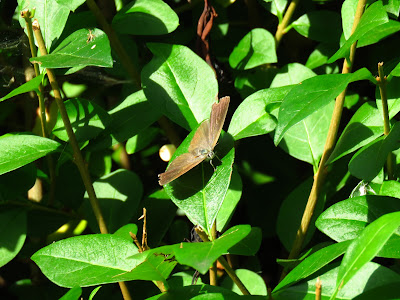Another post on a rapidly expanding species, this time a small spider, the Green Meshweaver, Nigma walckenaeri. All started on Saturday, during the YNU AGM in the University of Hull, where spider expert Geoff Oxford, showed us a specimen he had just collected from the university grounds, a tiny green spider that is currently expanding its range across the UK and now colonising Yorkshire. We all admired the individual, which had been collected with its web on a leaf.
After returning from the meeting, I searched the garden ivy, and since I've been searching ivy and holly, which are favoured leaves to weave it's mesh. Nigma walckenaeri chooses curled leaves, so it can take advantage of this to hide under its little web. As other regular character in this blog, Amaurobius, Nigma is a cribellate silk weaver.
Today, I took a local walk and came across a magnificent mature ivy, south east facing. I started searching its leaves, wondering if I had the wrong search image in my mind. It didn't take long to find a Nigma.












